Depictions of vampires over time have ranged vastly, from a decaying zombie-like figure kept alive only by draining the life force of other beings, to the dangerously intelligent and charismatic vampire of
modern fiction who has captured the imagination of subcultures and teenagers alike, drawn to the vampire's exaggerated sexuality and Gothic aesthetic. Though some aspects, such as their reaction to sunlight and the weapons used against them, have been updated with every new incarnation, there is one trait that all vampires of different ages and cultures have in common: their ability to drain the life energy of
their victims. This usually manifests itself as a penchant for drinking blood.
The very oldest vampires from folklore were believed to be supernatural or demonic, but for a large part of their history, it was generally believed that vampires were 'Revenants'. These are corpses reanimated, returning to bring harm and terror to the living, to live parasitically off their life-force. These corpse-like vampires had their origins in Slavic Europe. The Jiangshi in Chinese folklore is a 'hopping' reanimated corpse that kills its victims at night to drain their qi, or 'life force'. During the day, it rests in a coffin or a dark cave away from sunlight. 'The Tibetan Book of the Dead' describes blood-drinking, fang-toothed Deities whose victims turn into vampires after their death. Their actions have religious significance and are thought to be important in the cycle of Destruction and Preservation. Unlike later depictions showing vampiric behaviour as unnatural and corrupted, the Tibetan vampires are accepted as instrumental in continuing the natural life-cycle.
In more modern times, there has been a trend returning to depictions more like the older supernatural and demonic creatures, resulting in vampires that are more attractive, are more successful in retaining their limbs, teeth and glossy hair, and could easily pass for American High School students. Until they get angry...
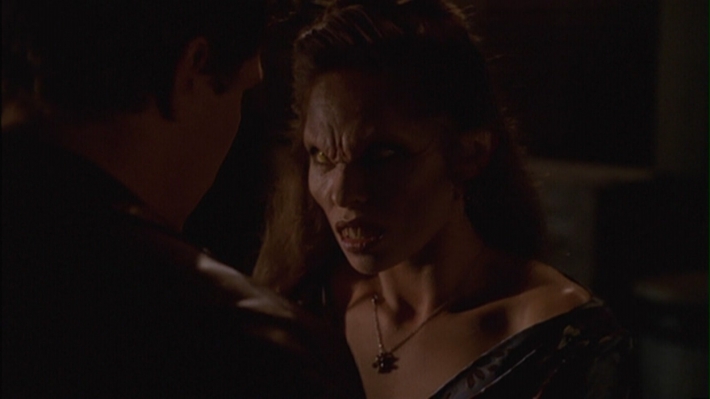
Credit: Mutant Enemy Productions
Though some incarnations of vampires simply drain the life-force, or Chinese qi, from their victims, the majority of vampires are known for their blood-sucking traits. There are some examples from nature of animals and insects that participate in Haematophagy (feeding on blood) on a regular basis, including leeches, lampreys and vampire bats. Such
small animals have found this to be a quick way of gaining nutrition, as blood is rick in essential proteins and lipids and can be taken with minimal effort. They are well-designed for blood-drinking: anticoagulants in their saliva stop the blood-clotting; sharp teeth allow for vein-cutting (phlebotomy); they release chemicals that can prevent inflammation and pain in the host. However, these animals are also well suited to digesting the blood and coping with the large quantities of iron, because for most animals, blood-drinking has serious health consequences.
In small doses, drinking blood is fine as long as the blood is clean and free from disease. However, the large quantities of iron mean that it is
toxic in high doses. This can lead to Haemochromotosis, or an iron overload, which can be fatal. Symptoms of such iron overload include diabetes, joint pain and bronzing of the skin. Tanning of the skin would contradict with recent deathly pale vampires, but would correlate with
early folkloric descriptions of vampires from the Balkans, who were thought to have a ruddy, dark complexion from blood consumption. More seriously, the condition can lead to diabetes, liver failure, arthritis, heart disease and even cancer. Vampire biology would have to be very different from a human's to cope with such iron overload, which suggests that the 'turning' of a human into a vampire would involve some great biological changes.
This is a hypothetical problem for a supernatural creature that is unlikely to exist (though you may be led to believe otherwise with a quick Google search for 'real vampires'), however there are a very small number of people who suffer from a condition called Clinical Vampirism, for whom the risks of blood-drinking are a far more real problem. I hesitate to add that there are very few cases of this syndrome, so the pseudo-diagnostic label is still not accepted and it does not appear in
the current Diagnostic and Statistical Manual of Mental Disorders (DSM-V). However, it's an example of habitual human haematophagy that most closely resembles the behaviour of vampires. It also has an alternative name with a literary origin, so this alone makes it worth a mention!
Clinical Vampirism is a condition described as an obsession with drinking blood. It is also known as Renfield's syndrome, after Dracula's human follower who consumes animals believing that he will absorb their life force. Renfield's behaviour in Bram Stoker's 'Dracula' progresses in stages, as does the sufferer's behaviour in documented cases of Clinical Vampirism. Renfield begins by eating flies, then starts feeding flies to spiders, then spiders to birds. He eventually eats the birds, believing he has achieved a greater concentration of life force inside the birds through his methodical feeding patterns. The stages of Renfield's syndrome supposedly begin with a key event in childhood that solidifies an association between the ingestion of blood and the feeling of excitement. Following puberty, this can develop into sexual arousal,
and the sufferer associates the drinking of blood with a sense of power and control. They may cut themselves to drink their own blood in small
quantities. This can lead to instances of zoophagia, the eating of animals and drinking of their blood, similar to Renfield's behaviour in the novel. Their attention may then turn to other human beings, resulting in sufferers stealing blood from hospitals or blood banks, or drinking the blood of consenting donors. Sometimes this may lead to violent crimes, even murder. However, documented cases of this condition are very rare and very infrequently lead to violent consequences.
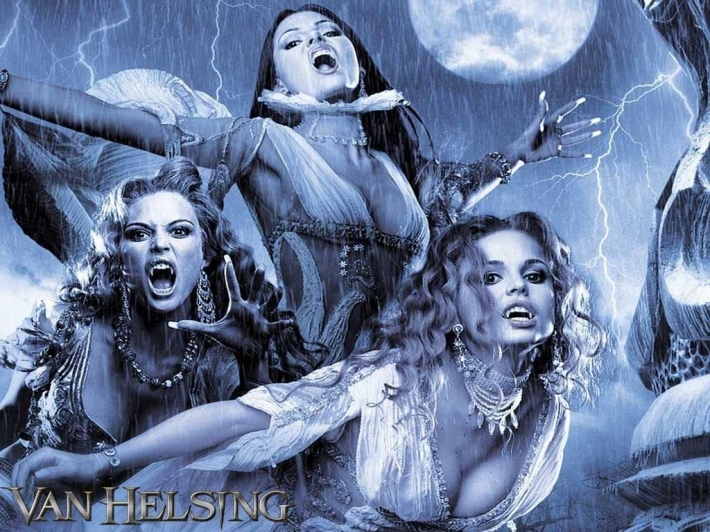
Credit: Universal Pictures
The association of vampiric activity with sexuality is common throughout the literary canon, as vampires are often portrayed as being unearthly beautiful and alluring. The three unnamed vampire women in Bram Stoker's 'Dracula', commonly referred to as the 'Brides of Dracula', are capable of enchanting male humans to feed upon them. Both Jonathan Harker and Van Helsing find themselves attracted to these women, while simultaneously feeling a sense of repulsion towards them. While trying to escape from Dracula's castle, Harker falls under the spell of these women and is saved only at the last minute by the Count.
One Hungarian noblewoman, Elizabeth Bathory (1560-1614) exhibited some vampire-like behaviour, in addition to her notoriety as a prolific serial killer which earned her the name, 'Blood Countess'. She apparently tortured young servants girls, and reportedly bathed, and possibly drank, their blood, in order to maintain a youthful appearance. The stories of her vampiric-like behaviour were recorded some years after her death, unlike her sadist crimes, of which there are many eye-witness accounts. She has been cited as the inspiration for the title character in Bram Stoker's 'Dracula'. There is no evidence whatsoever that bathing in blood will make your skin more healthy or more youthful. It is more likely to block your pores, and could have harmful effects if it's contaminated. In fact, as your outer skin cells are replaced every 24-72 hours, the effects of blood-bathing, if any, will be very short-lived. Healthy skin comes from a good diet and maintaining hydrated. Lotions will help moisturise your skin in the short term.
These conclusions do not bode well for the possible existence of vampires, considering their blood-sucking behaviour is so important both as an energy source and as a way of continuing the survival of the species. Though it is not always the case, in most folklore and literature vampires cannot have children and they only propagate by sucking the blood of humans to 'turn' them into vampires. Some believe that an exchange of blood is all that's required, whereas some books and films depict victims being drained completely of blood (exsanguination) before they turn into a supernatural creature themselves. Physics professor Costas Efthimou of the University of Central Florida proposed using geometric progression to determine how long it would take for the world's population to the 'turned' by vampires. His assumptions were not vastly different from the details of folklore and literature. He estimated that if a vampire feeds monthly to 'turn' a human victim, then all humans on Earth would be vampires within two and a half years. This was based on the supposition that the first vampire arose on January 1st 1660, when the first important writings on vampires appeared. The population at the time was 537 million, based on historical records.
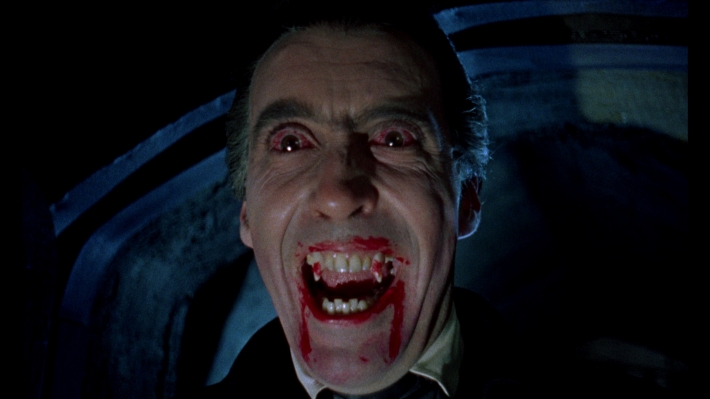
Credit: Hammer Horror
The details of vampire feeding habits are the source of much contention within fan circles and each new novel, film or TV series containing vampires seems to attempt to reinvent the genre in some way. As one example, Anne Rice's series of 'The Vampire Chronicles' has helped solidify the modern image of a vampire in the literary canon. Her vampires have many of the traits associated with the vampires of folklore and earlier literature, though she has diverged from tradition by removing their susceptibility to certain weapons, such as garlic, silver, holy water and crosses. Wooden stakes only temporarily injure her vampires. This makes her vampires (marginally) more realistic, as she doesn't suggest that objects can be endowed with some sort of holy power to destroy the creatures. They need to be confronted more physically. The notion that vampires may have an aversion to garlic could be explained by an allergy, passed on genetically through the species. This condition would result in rashes, difficulty breathing and potentially death if the sufferer was exposed to garlic.
Rice's vampires sleep in coffins to avoid exposure to the sun, which is very painful to them. This suggests that they may have a reaction similar to that experienced by sufferers of a group of rare, inherited blood disorders called Porphyria. This involves the disruption of enzymes that control the production of organic compounds called porphyrins, the best-known of which is heme, the red pigment in blood cells. Some forms of Porphyria primarily affect the skin, causing photo sensitivity and the formation of painful lesions and blisters after exposure to sunlight, resulting sometimes in serious disfigurement.
Porphyria has been suggested as an explanation for the origin of vampire and werewolf legends. Sufferers of the condition would avoid going out
during the day for fear of damaging their skin. However, aversion to sunlight is a trait given to vampires by fiction writers, as early folkloric vampires were able to go out in the sun and were even said to have a ruddy complexion. Even Bram Stoker's 'Dracula,' for many people the archetypal model of a modern vampire, did not find sunlight fatal to him, though it did cause him to lose his supernatural power. This would be one reason to discredit Porphyria as an explanation for the legend's origin.
Today cases of Porphyria are treated with injections of blood products, so it has been suggested that early sufferers of the disease may have tried to relieve their symptoms by drinking blood. However, there is little evidence to support this claim, as the blood chemicals needed by sufferers of Porphyria would not survive digestion, so it is unlikely that drinking blood would be found to alleviate symptoms. The claim that there must be a link has both been criticized for inaccurately describing the details of original vampire and werewolf legends and also for possibly increasing stigmatisation of Porphyria sufferers.
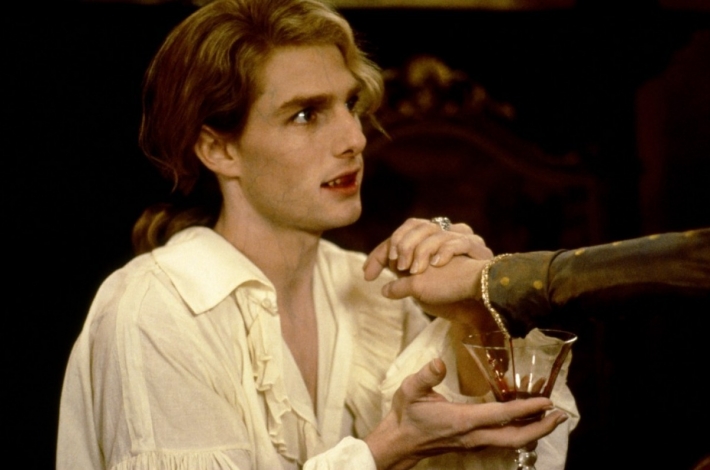
Credit: Universal Pictures
Upon becoming a vampire in Rice's novels, a character's beauty is enhanced. They also become more resistant to sunlight as they age. As immortal creatures, age simply makes them more 'statuesque' in appearance, as they develop very smooth white skin. Their eyes become more luminous, their skin pale and reflective and fingernails like glass, perhaps as a result of their avoidance of the sun, resulting in reduced damage from UV rays. They lose all natural body fluids and their bodies' natural functions cease, making them seem more like supernatural Gods than anything more Earthly or human. This possibly marks the start of the modern trend for more beautiful supernatural creatures.
Thanks to Anne Rice, the vampire of modern fiction is often a suave, charismatic villain or anti-hero, less of a wild, decaying monster. They are highly intelligent and artistic, and these traits make them more dangerous. Rice's vampires are also excessively emotional and sensual, in a way that is reminiscent of the trait of acute sensibility that was so highly praised in the 18th century. Sentimental novels such as Laurence Sterne's 'A Sentimental Journey' and characters such as Bramble in Tobias Smollett's 'The Expedition of Humphry Clinker' may have proved inspiration for Rice's vampires of high sensibility. She appears to draw on the 18th century idea that acute sensibility is the sign of a well-cultivated aesthetic and rational mind.
Many vampires of modern fiction have developed a range of superhuman traits, including superhuman strength, the ability to move at high speed so they cannot be detected by humans, extremely acute senses and high agility. These videos from TED blog are a good depiction of what various superhero powers would be like if they existed in reality. Many of these would apply to vampires and so would be worth looking at if you're interested in hearing more.
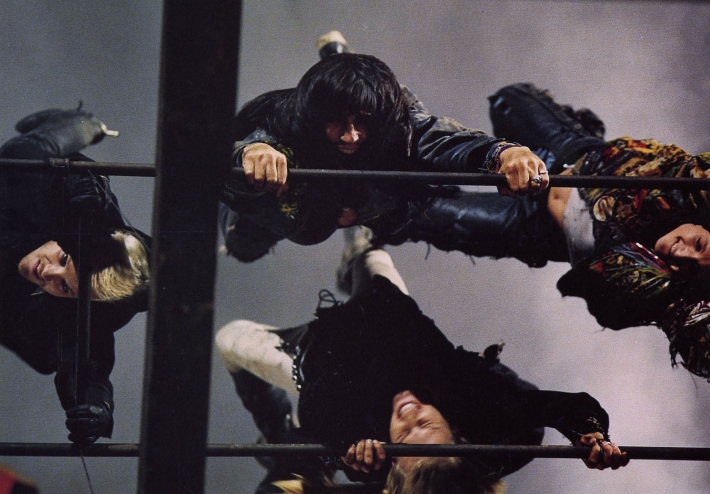
Credit: Warner Bros
Most remarkable of the cited vampire superpowers is their ability to shapeshift. In Bram Stoker's novel, Dracula is capable of turning into a bat, wolf, or even a mist. Mina makes note of seeing a bat 'coming and going in great whirling circles.' It seems to move away when it sees her, possibly as the Count tries not to draw attention to himself and his spying techniques. The idea of shapeshifting raises many scientific problems, quite similar to the superhero trait of super size. As energy, and as a result, matter cannot be created or destroyed, it is not clear where the extra mass of the vampire would go when he changes into an animal of a much smaller size. The mass of the larger vampire would have to concentrated into the body of the smaller animal, resulting in an unusually heavy creature, probably incapable of flight.
Folklore and literature attribute vampires with a collection of bizarre and wonderful traits that could only prompt the most feeble of explanations. These include some vampires' lack of shadows and reflections in mirrors, both of which are gross infringements upon the laws of physics and couldn't be explained without taking some serious liberties. However, prize for the most bizarre and inexplicable belief of all goes to a folk legend from the Balkans that tells the story of vampire fruit. The belief is associated with the Romani people of the region, who thought that pumpkins or melons left outside at night were at risk of undergoing a vampiric transformation. Tatomir Vukanovi documents his travels in Serbia during the early 20th century and describes what the local people believed happened to the cursed fruit:
the gathered pumpkins stir all by themselves and make a sound like 'brrrl, brrrl, brrrl!' and begin to shake themselves. It is also believed that sometimes a trace of blood can be seen on the pumpkin, and the Gs. then say it has become a vampire. These pumpkins and melons go round the houses, stables, and rooms at night, all by themselves, and do harm to people. But it is thought that they cannot do great damage to
folk, so people are not very afraid of this kind of vampire.
-- Tatomir Vukanovi, The Journal of
the Gypsy Lore Society
It is the fruit's lack of teeth which makes them apparently harmless, though I would've thought the mere thought of watermelons and pumpkins coming to life and rolling around by themselves would be enough to induce fear. The sign that a fruit is about to undergo a transformation is apparently the appearance of drops of blood on its skin. The unusual markings on the skin of this watermelon can be explained by it being overripe and beginning to leak some of its red innards. The moonlight wanderings and unusual sounds made by the fruit I find somewhat more difficult to explain.
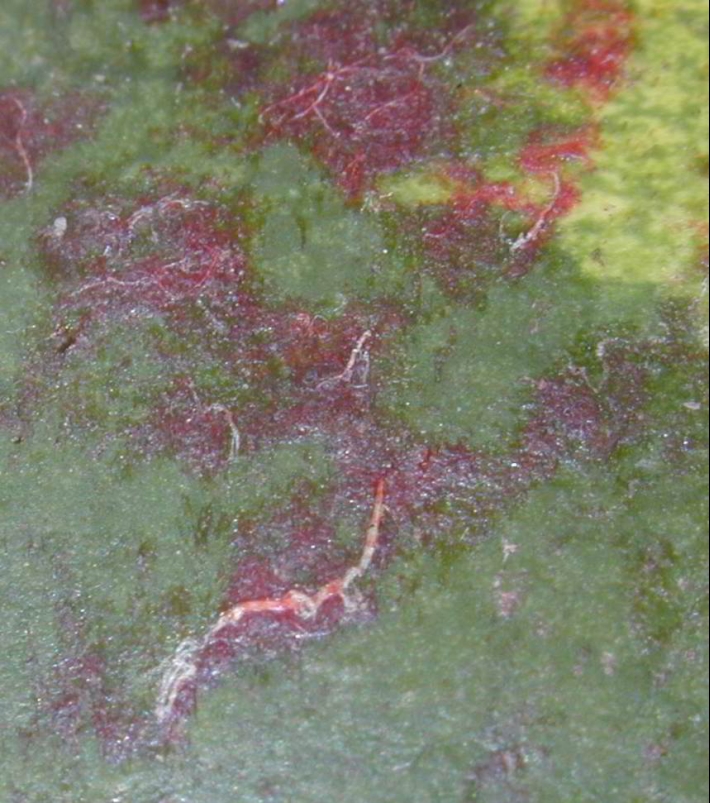
Vampire Watermelon.
Credit: James E Scarborough
As audiences become more scientifically aware, and as there are still many people who'd like to believe in the existence of vampires, it makes sense that writers and film-makers may pay more attention to the science to make the subjects of their films more realistic and more believable. However, it could be argued that it is the supernatural quality of vampires, allowing their altered biology and superhuman powers to exist, which makes them so alluring. People want to believe in something magical and otherworldly, and the horror in such literature and films is drawn from this fear of the unknown. Perhaps trying to demystify figures of fantasy contradicts their original purpose. In which case, the focus of my blog seems a little futile. As readers, I'd like to know what you think. Please leave your comments at the end of the article. Feel free to also leave your suggestions for future blog articles!
To contemplate the future of the vampire in literature, I'm interested to see how Anne Rice's latest will contribute to the current depiction
of genre. After more than a decade, the queen of the vampire-genre is planning to resurrect the vampire Lestat, who made his first appearance in 'Interview with the Vampire,' in a sequel to the Vampire Chronicles series. The novel will be titled 'Prince Lestat' and is due to be published in October. Following Meyer's young adult 'Twilight' series,
it remains to be seen whether the world is already sick to death of vampires, or whether readers will be anticipating eagerly a return to the less sparkly vampires of Rice's series.
References & Further Reading
- Efthimiou, Gandhi, 'Cinema Fiction vs. Physics Reality: Ghosts, Vampires
and Zombies' Skeptical Inquirer (2007). - Padmasambhava, 'The Tibetan Book of the Dead', trans. Thurman, Aquarian
(1994). - Rice, 'Vampire Chronicles' series, Knopf (1976-2003).
- Shan, 'The Saga of Darren Shan', Harper Collins (2000-2006).
- Smollett, 'The Expedition of Humphry Clinker', W Johnson and B Collins
(1771). - Stern, 'A Sentimental Journey' (1768).
- Stoker, 'Dracula', Archibald Constable and Company (1897).
- Vukanovic, 'The Vampire', The Journal of the Gypsy Lore Society (1957-1960).
- 'Buffy The Vampire Slayer', Mutant Enemy Productions (1997-2003).
- 'Dracula', Hammer Horror (1958).
- 'Interview With The Vampire', Warner Bros (1994).
- 'The Lost Boys', Warner Bros (1987).
- 'Van Helsing', Universal Pictures (2004).
Listing image: Konami
